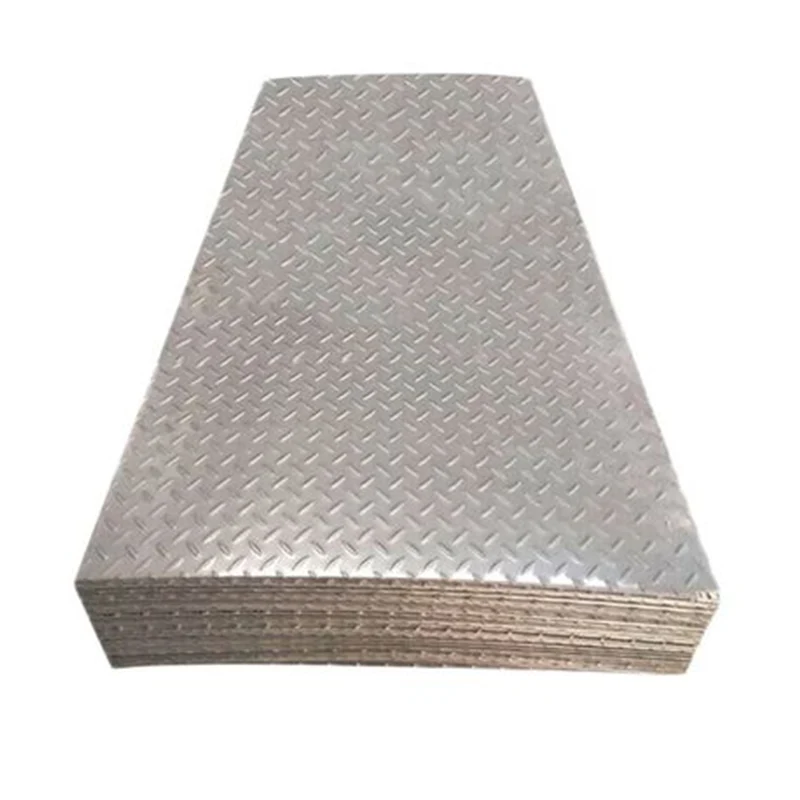Everything You Need to Know About Carbon Steel Plates
2025-06-18
When it comes to industrial applications, construction, manufacturing, and engineering, carbon steel plates play a crucial role. These versatile materials are used in a wide range of industries due to their durability, strength, and affordability. But what exactly are carbon steel plates, and why are they so important? Let’s dive deeper into the world of carbon steel plates and explore their uses, benefits, and types.
What is Carbon Steel Plate?
A carbon steel plate is a flat piece of steel that is made primarily from iron and carbon. It is one of the most common types of steel used in manufacturing and construction because of its strength, formability, and cost-effectiveness. Carbon steel plates are available in various thicknesses and grades, each suited for different applications, from heavy-duty industrial use to lighter, decorative projects.
The key characteristic of carbon steel is its carbon content. The amount of carbon in the steel influences its hardness, tensile strength, and overall performance. Unlike alloy steel, carbon steel contains no significant amounts of other elements like chromium, nickel, or molybdenum, making it more affordable and easier to produce.
Types of Carbon Steel Plates
Carbon steel plates come in different types, categorized based on the amount of carbon they contain. The three primary categories are:
1. Low-Carbon Steel Plates (Mild Steel Plates)
Low-carbon steel contains up to 0.3% carbon. These plates are the most common and are known for their malleability and ductility, which means they can be easily formed into different shapes. They are widely used in the automotive industry, construction, and general manufacturing. Mild steel plates are also often used in structures that don’t need extreme hardness or strength but still require durability.
2. Medium-Carbon Steel Plates
Medium-carbon steel typically contains between 0.3% and 0.6% carbon. This type of steel offers a balance between strength and ductility. Medium-carbon plates are used in applications that require higher strength and toughness, such as shafts, gears, and bolts. They are commonly used in industries like automotive and machinery manufacturing.
3. High-Carbon Steel Plates
High-carbon steel contains more than 0.6% carbon. This type of steel is extremely hard and wear-resistant, but it is also more brittle and less ductile. High-carbon steel plates are used in applications where high strength and hardness are essential, such as cutting tools, knives, and wear-resistant parts.
Each type of carbon steel plate has its advantages and is suited for specific uses depending on the needs of the project.

Benefits of Carbon Steel Plates
Carbon steel plates offer a wide range of benefits that make them a popular choice in many industries. Here are some key advantages:
1. Strength and Durability
Carbon steel is known for its incredible strength, which makes it an ideal choice for heavy-duty applications. It can withstand harsh conditions, high pressure, and wear, making it perfect for structures and machinery that need to endure constant stress.
2. Versatility
Carbon steel plates can be easily shaped, cut, and welded to create various components. Whether you need plates for construction, automotive manufacturing, or structural applications, carbon steel can be adapted to a variety of designs.
3. Cost-Effective
Compared to other types of steel like stainless steel or alloy steel, carbon steel is generally more affordable. Its relatively low production cost makes it an attractive option for businesses looking to minimize their material expenses.
4. Corrosion Resistance (in Some Grades)
While carbon steel is more susceptible to rust and corrosion than stainless steel, certain grades of carbon steel, especially those with additional coatings, can offer reasonable resistance to corrosion. For applications in environments where rust may be a concern, coatings like galvanization or painting can be applied to enhance protection.
5. High Hardness (for High-Carbon Grades)
High-carbon steel, in particular, offers an excellent hardness-to-weight ratio, making it perfect for tools and parts that need to maintain sharpness and resist wear over time.
6. Heat Treatment Capability
Carbon steel plates are highly responsive to heat treatment processes like quenching and tempering. These processes can enhance the steel's properties, such as strength, hardness, and toughness, depending on the requirements of the application.
Common Uses of Carbon Steel Plates
Due to their robustness and versatility, carbon steel plates are used in a wide variety of applications across different industries:
Construction: Carbon steel plates are commonly used in the construction of bridges, buildings, pipelines, and industrial plants. The material's strength and durability make it ideal for structural applications that require a reliable foundation.
Automotive Industry: From car body panels to frame parts and chassis, carbon steel plates are frequently used in the production of automobiles due to their balance of strength and formability.
Shipbuilding: The high strength of carbon steel plates makes them suitable for the production of ship hulls and marine structures, which must be able to withstand the corrosive effects of seawater.
Heavy Machinery and Equipment: Carbon steel is often used in the manufacturing of machinery parts, such as gears, shafts, and engine components, that require exceptional strength and durability.
Oil & Gas Industry: Carbon steel plates are used for pipelines and oil rigs, as they provide the necessary strength to handle extreme pressure and wear in oil and gas transportation systems.
Tooling and Cutting Applications: High-carbon steel is commonly used in cutting tools, blades, and industrial knives, as it provides the hardness and edge retention needed for precision tasks.
Carbon steel plates are the backbone of many industrial applications. With their strong, versatile, and cost-effective properties, they are indispensable in sectors ranging from construction to automotive manufacturing. By understanding the types of carbon steel plates and their benefits, you can make more informed decisions when selecting the right material for your projects.
Whether you’re building a bridge, manufacturing heavy machinery, or simply in need of durable, affordable material for your next project, carbon steel plates can provide the strength and reliability you need. As one of the most commonly used materials in modern industry, carbon steel continues to play an essential role in shaping the world around us.


